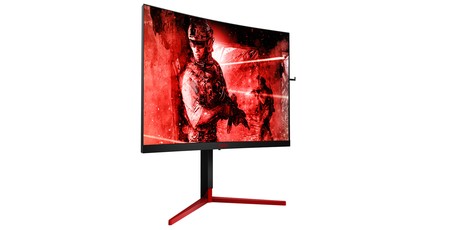
Manufacturer: AOC
UK price (as reviewed): £753.95 (inc. VAT)
US price (as reviewed): Currently unavailable

AOC appears to be a believer in G-Sync too, as it has very recently released the Agon AG273QCG, a 27” screen with a native resolution of 2,560 x 1,440 (i.e. 1440p). Such monitors are something of a sweet spot for desktop gamers, we believe: The size fills the visual field nicely while the resolution strikes a great balance between sharpness and GPU horsepower requirements compared to 1080p (not sharp enough) and 4K (too demanding on GPUs). The AG273QCG relies on a twisted nematic (TN) panel and has a claimed 1ms response time, maximum refresh rate of 165Hz, and an 1800R curve designed to boost immersion.
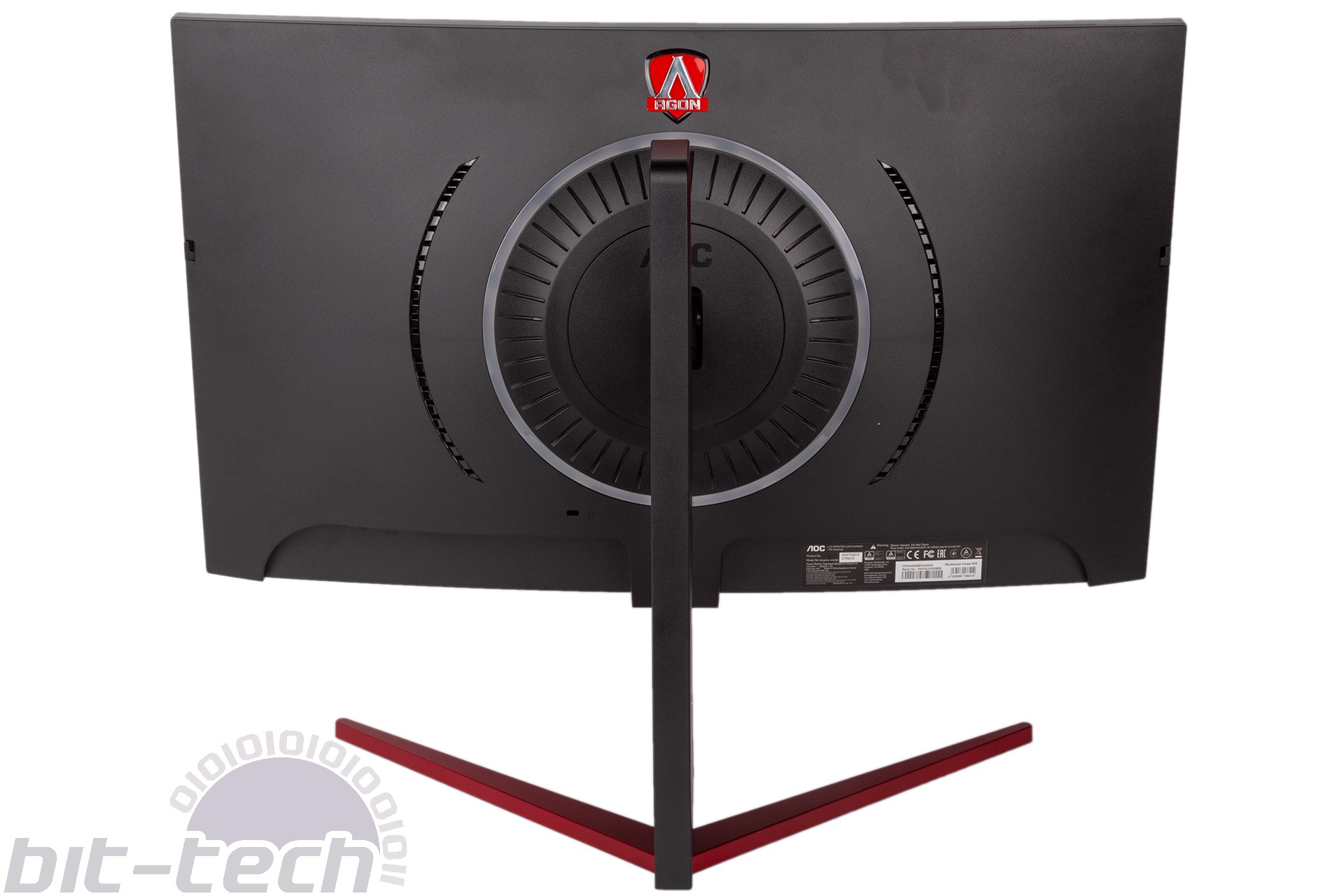
Fresh from the box, the base needs attaching to the stand, and this is easily achieved via a single pre-attached, tool-free screw. The base and stand both have sturdy metal interiors with external plastic coats sporting a red and black aesthetic. The screen itself then clips into and locks onto the stand all without the need for tools. It features the popular design of having almost no plastic visible on the side and top edges and a relatively thick bottom plastic bezel. This isn’t a true bezel-free monitor, as there is the common small in-panel border to keep in mind too.
The monitor has a medium-sized desk footprint given its size and offers a decent selection of physical adjustments including plenty of height as well as some vertical tilt and left/right swivel. The only one missing is pivot (i.e. the ability to rotate into portrait mode), but if you take a minute to think about how that would look with a curved screen, the decision to exclude it is understandable. However, the decision to go for an integrated 75mm x 75mm wall mount bracket instead of the more standard 100mm x 100mm is perhaps a poor one, though adaptors are available.

As ever G-Sync is only available over DisplayPort, and the monitor offers one such connector. You also get one HDMI 1.4 connector, limited to 60Hz at 1440p. DisplayPort and HDMI cables are both supplied, one apiece.
The display connectors are joined by a four-port USB 3.0 hub, one port of which has fast charge support, as well as separate headphone and microphone jacks that tie into the digital audio of HDMI/DisplayPort, and finally a single 3.5mm audio input. The dual 2W speakers aren’t bad by monitor standards, but anyone spending this much on a screen will likely want something more from their audio experience.

All connectors here are down-facing; we don’t have a problem with that when it comes to the display and power connectors, as you’re unlikely to need to access them very often, but the USB 3.0 hub design is pretty bad for accessibility, especially as the ports are also really clustered together. Both these and the 3.5mm headphone/microphone jacks could do with being side-facing.
The AG273QCG features two pull-out headphone hooks: one on each side. This is certainly a useful addition for the target audience, but the construction should be better at this price, as the plastic is very cheap feeling.
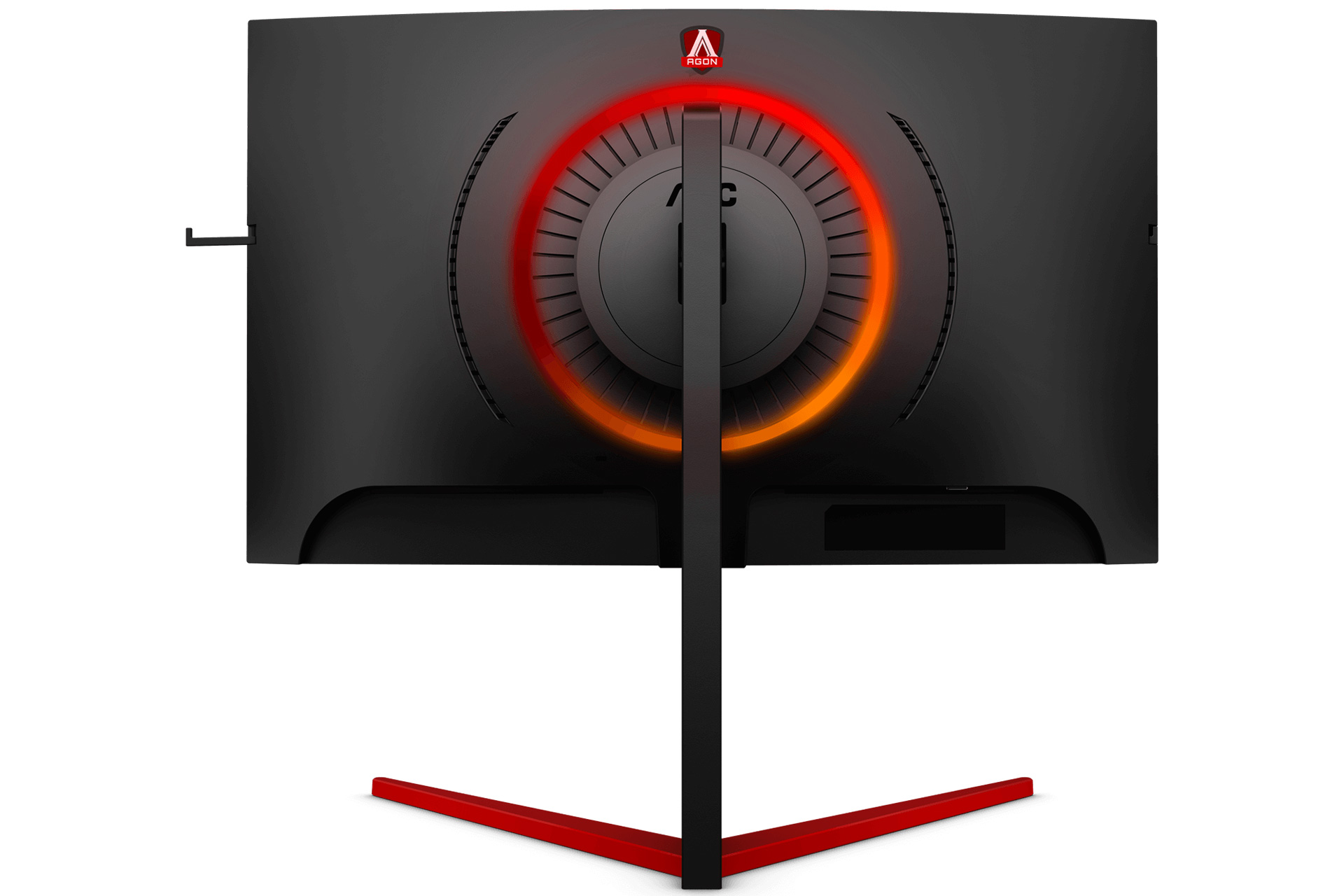
What does every product marketed towards gamers need? Yep, RGB! The AG273QCG hops onto this particular bandwagon with an RGB-illuminated ring on the back, so the most you’ll get from it is an ambient glow on the wall behind. It’s all controlled via the on-screen display (OSD); you can’t synchronise it with other peripherals or in-game events like you can with the MSI Optix MPG27CQ, but we don’t imagine many will see that as a big loss.

A quad-directional joystick is used to navigate the menu and can also be pressed inwards. It’s centrally located on the underside of the front bezel. Parts of this are a little unintuitive, such as initial menu selections being made with a central click but then selections in sub-menus being made with a nudge to the right. As ever you do get used to it, but a bit more thought here would have been nice. Thankfully, the menu is comprehensive as far as image settings go, with key ones like brightness, contrast, and RGB values (for the pixels, not the lights) being easy enough to find. The monitor also offers a crosshair option to help you no-scope enemies, shadow control, a range of low blue light settings, integrated game mode presets for FPS/ RTS/racing as well as three custom ones that you can configure and save.
Specifications
- Screen size 27", 1800R curvature
- Panel technology TN (twisted nematic)
- Resolution 2,560 x 1,440
- Aspect ratio 16:9
- Maximum refresh rate 165Hz
- Variable refresh rate Yes (G-Sync)
- Brightness 400cd/m2
- Contrast ratio 1,000:1
- Response time 1ms Smart Response
- Connectors 1 x DisplayPort 1.2, 1 x HDMI 1.4
- USB 4 x USB 3.0
- VESA wall-mount Yes, 75 x 75
- Adjustments Height, swivel, tilt
- Speakers Yes, 2 x 2W

MSI MPG Velox 100R Chassis Review
October 14 2021 | 15:04

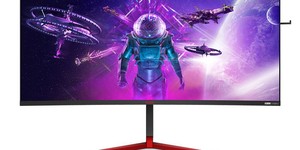

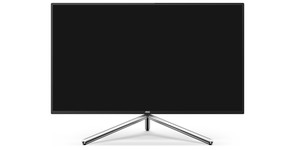




Want to comment? Please log in.